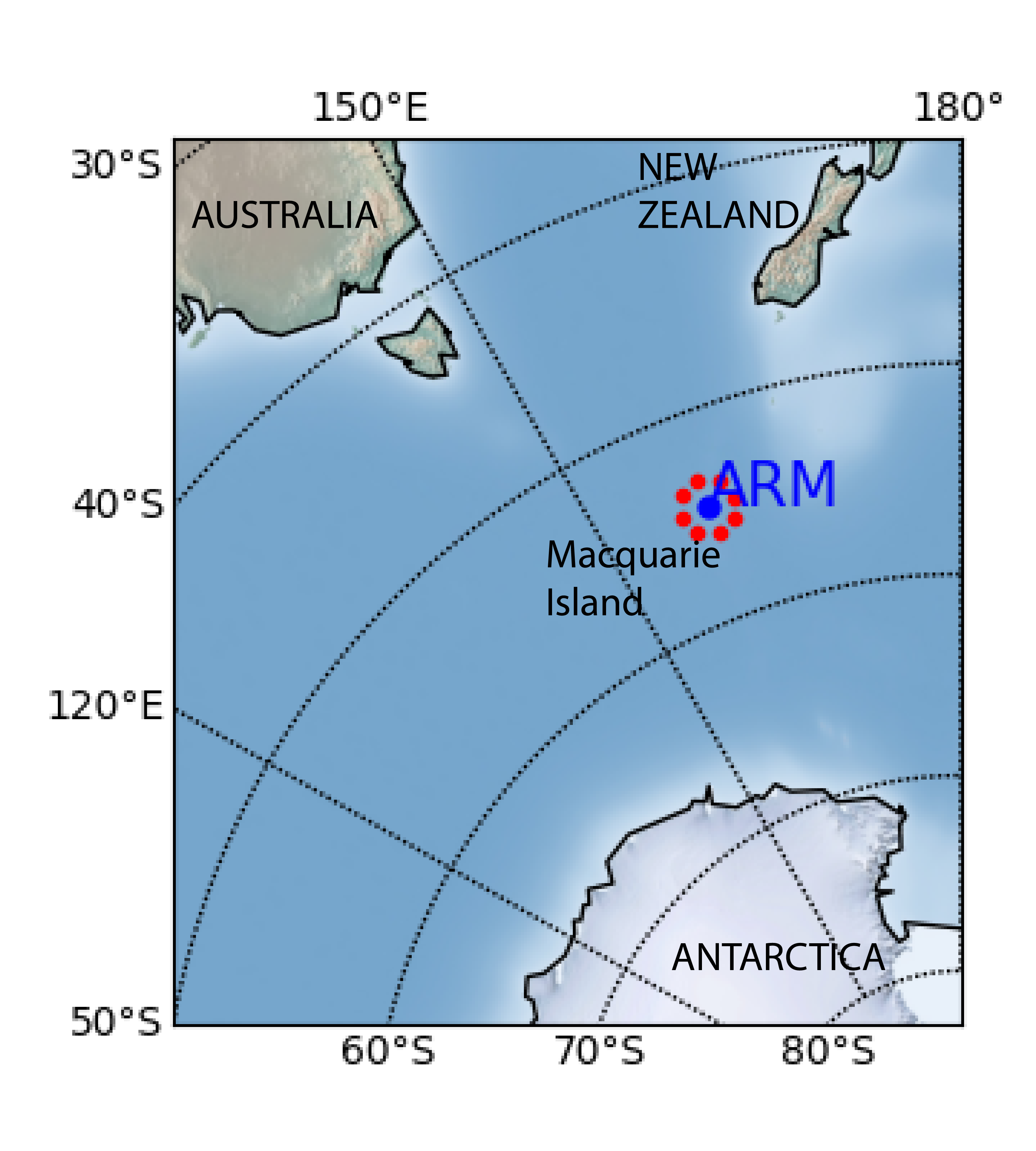Large-Scale Forcing Data Released for Macquarie Island Campaign
Published: 22 September 2022

Continuous large-scale forcing data are now available for the Macquarie Island Cloud and Radiation Experiment (MICRE). The Atmospheric Radiation Measurement (ARM) user facility conducted the MICRE field campaign from March 2016 through March 2018 on Macquarie Island in the Southern Ocean.
Forcing data for MICRE were developed from a constrained variational analysis approach (Zhang and Lin 1997; Zhang et al. 2001).
Scientists can use this value-added product (VAP), known as VARANAL, to drive single-column models, cloud-resolving models, and large-eddy simulation models for different cloud and convective systems. To help validate model simulations, the VAP includes diagnostic fields such as diabatic heating profiles, cloud fields, surface measurements, and large-scale conditions.
The MICRE large-scale forcing data were generated based on the European Centre for Medium-Range Weather Forecasts Reanalysis v5 (ERA5).
The forcing data represent an average over the analysis domain, centered at 158.9oE, 54.5oS with a radius of 150 kilometers. The analysis domain represents ocean only to exclude the impact of different surface types on the observed surface radiative and turbulent heat fluxes.
This evaluation data set is in netCDF format, with a time resolution of 60 minutes and a vertical resolution of 25 hPa.
Scientists can begin using the MICRE large-scale variational analysis forcing data for model simulation and evaluation. Please note that this data set represents averages over the analysis domain. Users need to be cautious when comparing this data set with the ARM single-point measurements.
More information about VARANAL can be found on the VAP web page.
To ask questions, report data problems, or provide feedback on this evaluation product, please contact Cheng Tao or Shaocheng Xie. More details about ARM continuous forcing data are in Xie et al. (2004).
Access the MICRE VARANAL data in the ARM Data Center. (Go here to create an account to download the data.)
Data can be referenced as doi:10.5439/1860369.
References: Zhang M and J Lin. 1997. “Constrained Variational Analysis of Sounding Data Based on Column-Integrated Budgets of Mass, Heat, Moisture, and Momentum: Approach and Application to ARM Measurements.” Journal of the Atmospheric Sciences, 54(11), 1503-1524, doi:10.1175/1520-0469(1997)054<1503:CVAOSD>2.0.CO;2.
Zhang M, J Lin, RT Cederwall, JJ Yio, and SC Xie. 2001. “Objective Analysis of ARM IOP Data: Method and Sensitivity.” Monthly Weather Review, 129(2), 295-311, doi:10.1175/1520-0493(2001)129<0295:OAOAID>2.0.CO;2.
Xie S, RT Cederwall, and MH Zhang. 2004. “Developing long-term single-column model/cloud system–resolving model forcing data using numerical weather prediction products constrained by surface and top of the atmosphere observations.” Journal of Geophysical Research: Atmospheres, 109(D1), D01104, doi:10.1029/2003JD004045.
Keep up with the Atmospheric Observer
Updates on ARM news, events, and opportunities delivered to your inbox
ARM User Profile
ARM welcomes users from all institutions and nations. A free ARM user account is needed to access ARM data.


















